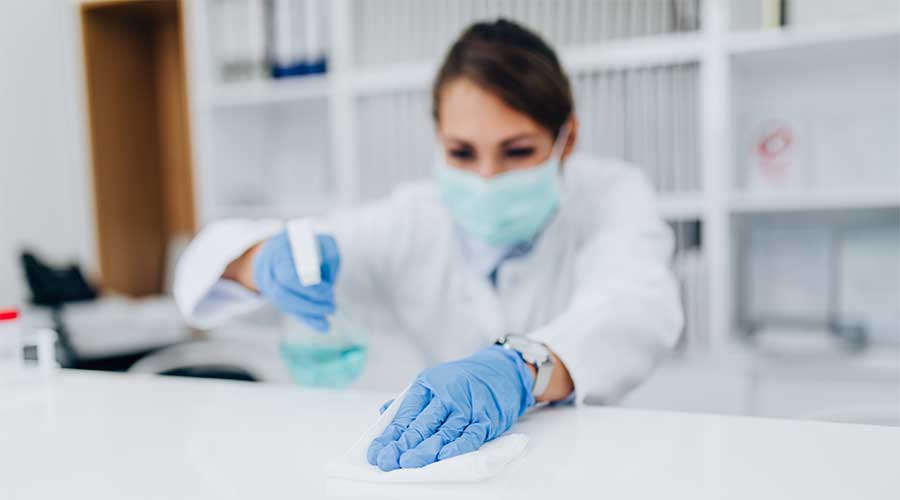In 1742, the physician Sir John Pringle was tasked with logging the problems associated with military life. It resulted in the book, “Observations on the Diseases of the Army.” In the book, Pringle wrote there were two fundamental issues related to infection.
The first issue was that inadvertent contact between medical professionals, the sick and the instruments and surfaces they touched led to more instances of the same illness. The second issue was that the cause was not some mysterious ethereal phenomenon but rather an unseen one.
He was certain infections were microbial in nature and that he could stop their spread with the use of a combination of chemicals, which he termed antiseptic. The solution was straightforward: Keeping hands, clothing and environmental surfaces clean would prevent infections.
Despite being more than 280 years old, Sir Pringle’s observations remain the theoretical basis of current infection prevention measures. Despite the relative simplicity of infection prevention principles, achieving the goal is unfortunately not easy.
Read Next: 3 Most Common Questions About Chemicals
Healthcare facilities today are an assemblage of departments, each of which is responsible for carrying out certain roles. To prevent healthcare-associated infections (HAIs) from occurring, two departments usually are involved on the frontlines of the battle.
The first is the infection prevention and control department (IPC), which is staffed with academically trained professionals. The other is the environmental services department (EVS), which is comprised of professionals who actually clean the facility. Their responsibility is to work together towards a similar goal — reduce the risk of infectious disease. Unfortunately, as history has shown, this is where the problems start.
When hospitals want to compete in their markets, leaders often look to the latest 128-slice, 3D CT scanner, a Da Vinci robot to perform intricate surgeries, recruit the best surgeon or begin a new service line with the best return on investment. While these capital expenditures and improvements might attract publicity for a fleeting moment, the board of directors needs to consider a different, low-cost option that provides the best chance to improve patient satisfaction, reduce HAIs and improve the bottom line: the environmental services department.
In a 2012 Scientific American article titled, “Clean Sweep: Hospitals Bring Janitors to the Front Lines of Infection Control,” Marilyn McKenna wrote, “It hasn’t been that long ago the poster bug for nasty bacteria that attack patients in hospitals was MRSA. Because MRSA clings to the skin, the chief strategy for limiting its spread was thorough hand washing. Now, however, the most dangerous bacteria are the ones that survive on inorganic surfaces, such as keyboards, bed rails and privacy curtains. To get rid of these germs, hospitals must rely on the staff members who know every nook and cranny in each room, as well as which cleaning products contain which chemical compounds.”
In 1742, Dr. Pringle wrote that keeping hands, clothing and environmental surfaces clean would prevent infections. Simple cleaning of the environmental surfaces might be one of our key defenses in the future battle against infectious disease. With antibiotic-resistant organisms proliferating on common touchpoints for up to 56 days or longer, the study of cleaning and measuring cleanliness is becoming all-important.
One of the most salient arguments for better, more thorough cleaning and disinfection is, “One well-trained, conscientious cleaning professional, given the right tools and enough time to do her job to a standard, will prevent more disease than a room full of doctors can cure.” Prevention trumps a cure every time.
J. Darrel Hicks, BA, MESRE, CHESP, Certificate of Mastery in Infection Prevention, is the past president of the Healthcare Surfaces Institute. Hicks is nationally recognized as a subject matter expert in infection prevention and control as it relates to cleaning. He is the owner and principal of Safe, Clean and Disinfected. His enterprise specializes in B2B consulting, webinar presentations, seminars and facility consulting services related to cleaning and disinfection. He can be reached at darrel@darrelhicks.com, or learn more at www.darrelhicks.com.

 Building Disaster Resilience Through Collaboration
Building Disaster Resilience Through Collaboration Amae Health Expands to New York City
Amae Health Expands to New York City Hospital for Special Surgery Opens Two New Facilities in New Jersey
Hospital for Special Surgery Opens Two New Facilities in New Jersey Should We Be Testing Toilet Water in Patient Restrooms?
Should We Be Testing Toilet Water in Patient Restrooms? Healthcare Union Petitions for Increased Staff Safety at HCA Florida Hospitals
Healthcare Union Petitions for Increased Staff Safety at HCA Florida Hospitals